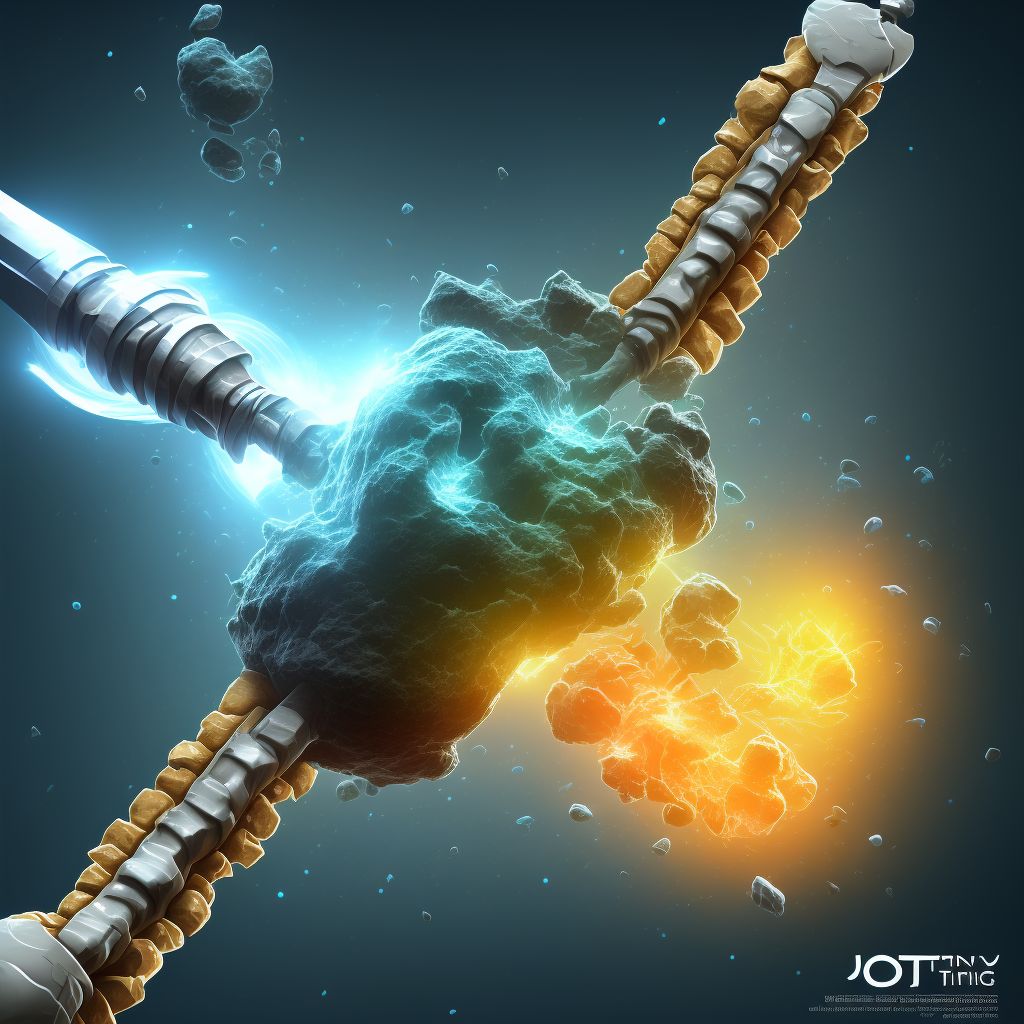
Displaced oblique fracture of shaft of left tibia, subsequent encounter for closed fracture with nonunion Save
ICD-10 code: S82.232K
Disease category: S82.232: Displaced oblique fracture of shaft of left tibia
Displaced Oblique Fracture of Shaft of Left Tibia: Understanding the Condition
A displaced oblique fracture of the shaft of the left tibia refers to a severe fracture in the bone of the lower leg, specifically the tibia. This fracture occurs when the bone breaks at an angle, resulting in a displaced or misaligned bone structure. The subsequent encounter for a closed fracture with nonunion indicates that the fracture has not healed properly and requires further attention.
When a displaced oblique fracture occurs, it can be a source of significant pain and discomfort for the individual. This type of fracture often requires medical intervention to realign the bone fragments and promote proper healing. However, it is important to note that this article will not discuss specific treatment options.
Nonetheless, it is crucial to understand the nature of this condition. The tibia, also known as the shinbone, is a weight-bearing bone located in the lower leg. Fractures in this area can occur due to various reasons, such as trauma from accidents, falls, or sports injuries. The oblique fracture, characterized by a diagonal break, can cause the bone to shift out of its normal position.
Individuals with a displaced oblique fracture may experience symptoms such as severe pain, swelling, bruising, and difficulty bearing weight on the affected leg. It is imperative to seek medical attention promptly to assess the fracture's severity and devise an appropriate treatment plan.
- Diagnosis: Medical professionals will conduct a thorough examination, which may include physical assessments, X-rays, or other imaging tests to evaluate the extent of the fracture.
- Immobilization: To prevent further damage and promote healing, a cast, splint, or brace may be used to immobilize the leg and keep the bone in place.
- Monitoring: Regular follow-up appointments will be necessary to monitor the progress of the fracture and ensure proper healing.
In conclusion, a displaced oblique fracture of the shaft of the left tibia is a severe injury that requires medical attention. This type of fracture can cause significant pain and discomfort, often necessitating intervention to realign the bone fragments and facilitate proper healing. If you suspect you have this condition, it is crucial to consult a healthcare professional for an accurate diagnosis and appropriate treatment plan.
Treatment of Displaced oblique fracture of shaft of left tibia, subsequent encounter for closed fracture with nonunion:
Treatment Options for Displaced Oblique Fracture of the Shaft of Left Tibia, Subsequent Encounter for Closed Fracture with Nonunion
When it comes to a displaced oblique fracture of the shaft of the left tibia, subsequent encounter for closed fracture with nonunion, there are several treatment options available. The choice of treatment depends on various factors, such as the severit...
To see full information about treatment please Sign up or Log in